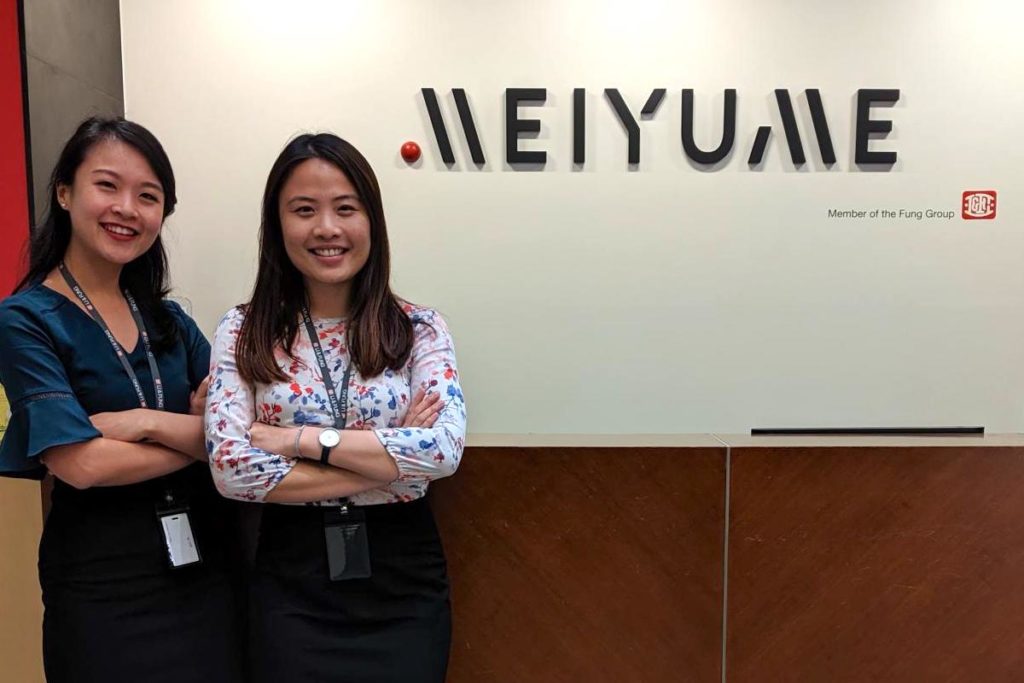Meiyume, a global beauty solutions company headquartered in Hong Kong, was the host of my Summer Associate Program (SAP) project. The China plant where I was based manufactures beauty products such as blush, eye shadow, lipstick, lotion, shampoo, and shower gel.
Over the years, the sales team have worked to create “sticky” relationships with their customers with the goal of converting simple OEM accounts into turnkey ones, so that clients come to us for end-to-end solutions (ideation, formulation, production, filling and final packaging) instead of just manufacturing to order.
During my SAP, I worked on a commercialisation plan for a new machine that the factory was installing, gained exposure to the makeup sales cycle by working on an account with a multinational cosmetics company, and pitched a range of 30+ innovation products to a UK-based client. During my first plant tour, I learned that many brands do not wish to have their luxury fragrances and cosmetics labelled with the ‘Made in China’ stickers mandated for products that are finally packaged here.
As a result, these brands perform incredible logistical acrobatics to make products more palatable. A product might be made in China, but its retail price is justified because it was “formulated” in the UK. In Zhangmutou, where I am based, this sentiment that China-made products are synonymous with poor (or pirated) quality is echoed among locals. I am told people make the 1.5 hour trek to neighbouring Hong Kong when they wish to purchase bona fide baby milk formula and fine gold jewelry.
I learned during ASB’s US Industry Trek, via a talk on the global luxury goods industry, that the Chinese are afraid of purchasing “Made in China” products – authenticity concerns are one of the factors driving them to make 85% of their luxury good purchases abroad. However, the “Made in China” slogan is slowly being reclaimed by haute couture domestic luxury Chinese brands like Shang Xia and Shiatzy Chen.
And in Meiyume, the R&D team channels its focus more on proactive research (formulating innovative new beauty products) rather than reactive research (replicating existing formulas to serve customer requests). This would allow its China plant to become a bigger player in the global beauty innovation space. But while China struggles to be recognized as an innovator in manufacturing, other sectors have seen rapid, noticeable innovations.
Digital payment methods such as AliPay and WeChat Pay have become ubiquitous. E-commerce platforms TMall, JDMall, Pinduoduo and Suning sell everything from 100% original international brands to fresh fruit. As a foreigner without access to a Chinese bank account, I’m precluded from enjoying many of these services. My first week here, the shopkeeper of a hole-in-the-wall neighbourhood beef noodle stall declined my offer to pay in cash for my meal and insisted on virtual payment instead.
The pervasiveness of technology through all levels of society in China is also illustrated by this anecdote from a colleague – she once saw a homeless man displaying his WeChat QR code for passers-by to make donations. Even in the workplace, parcels for delivery to customers are sent via WeChat apps. My colleagues simply print out QR codes and slap them on the boxes, no need for writing addresses.
And the newest wave of Meiyume’s Chinese customers are themselves digital disruptors, indie companies with rapid product development cycles that are comfortable selling on e-commerce platforms. These companies, which boast attractive packaging designs and rich marketing materials such as immersive mini apps, are winning out among the next generation of consumers. And, like the rest of the world, key opinion leaders (KOLs) in China have dramatic influence on which make-up brands are “in.”
One man named Austin Li, also known as the Lipstick Master, has made a career out of it, trying on and reviewing lipsticks so that his viewers don’t have to. My short glimpse into the world of manufacturing in China has been rich in contrasts. While China still has to fight for better perception among its global customers, there’s no doubt that quality, speed and innovation are alive and well here.





